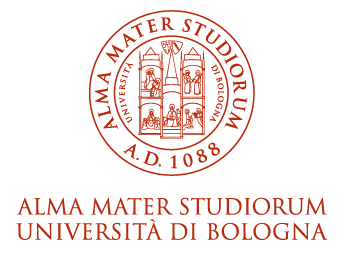- Docente: Yolanda Sabaté
- Credits: 9
- Language: Spanish
- Teaching Mode: Traditional lectures
- Campus: Bologna
-
Corso:
First cycle degree programme (L) in
Asian Languages, Markets and Cultures (cod. 0980)
Also valid for First cycle degree programme (L) in Foreign Languages and Literature (cod. 0979)
Learning outcomes
At the end of the course the student will possess a fundamental knowledge of the metalanguage and different aspects of a descriptive-analytical model of the Spanish language. He/She will be competent in all the communicative abilities according to the Council of Europe Framework Lebel B1.
Course contents
SPANISH LINGUISTICS (semester course)
First module : Principles of Spanish phonology and phonetics
1. Phonetics and Phonology. Sounds. Archiphonemes. Phonemes. Allophones.
2. Characteristics of the articulation of sounds in Spanish.
3. Phonetic International Alphabet and Alphabet of the Review of Spanish Philology.
4. Vowels. Diphthong and Triphthong. Hiatus.
5. Accentuation. Intonation. Phonic groups. Groups of the intonation. Melodic curve. Tonemes. Functions of intonation.
6. Syllables
Second module : Spanish Morphology
1. The Spanish lexis. Constitutive elements of the lexis, vulgarisms and neologisms
2. Word-formation. Morphologic processes: inflection, origin or derivation ¬ prefix, suffix and infix ¬ and compounding
3. Structure of the complex word. Morphologic analysis: segmentation and classification of morphemes. Allomorphs.
4. Relationship between morphology and phonology. Relationship between morphology and syntax.
5. Verbal paradigm. Morphology of the verb in Spanish.
SPANISH LANGUAGE PRACTICES (ANNUAL COURSE)
Dott.ssa Ana Reyes Carvalho Gruppo A-F
Dott.ssa Maria Delia Cocera Gruppo G-O
Dott.ssa Marina Partesotti Gruppo P-Z
OBJECTIVES
The main objective of this course is to encourage the recognition, the understanding and the application of functions and communicative structures by means of the acquisition of the four basic abilities: writing/reading comprehension/production.
The continuous attention on the language as an assembly of linguistic acts with different functions and purposes will be concretely exercised by means of texts comprehension and production (dialogues, readings, abstracts, etc.) both on written and oral form.
The language reflection, specially regarding the phonetics, the orthography and the morphosyntactic structures of the second language (also in contrast with those of the first language) will help the student to refine the linguistic observation and to develop the logic abilities both inductive and deductive.
Moreover the objective of this course is to offer the necessary instruments for a first direct comparison between the own culture and other cultures, also by means of the lexicon and phraseology study.
Readings/Bibliography
Linguistic
- Quilis, Antonio (1998), Principios de fonología y fonética españolas,Madrid, Arco/Libros, 7-91.
- Varela Ortega, Soledad (2005), Morfología léxica: la formación de palabras, Madrid, Gredos, 7-101.
- Gutiérrez Araus, María Luz (2000), ''El paradigma verbal'' in Introducción a la lingüística española, a cura di Manuel Alvar, Barcelona, Ariel, 213-233.
- Hernández Alonso, Cesar (2000), ''Morfología del verbo. La auxiliaridad'' in Introducción a la lingüística española, a cura di Manuel Alvar, Barcelona, Ariel, 195-211.
Language Practices
- Gramática aplicada del español, Alicia Jiménez, Juan M Fernández, Petrini Editore, 2009.
-Ejercicios de gramática, Equipo Santillana, 2010.
N.B. Compulsory texts and other materials (reading, audio, video materials…) adopted to follow the lessons and to prepare the written and oral exams, will be indicated in the specific program of each CEL at the beginning of the course.
Teaching methods
SPANISH LANGUAGE PRACTICE
- A variety of practice activities for the four abilities development;
- implementation of activities in order to consolidate a correct phonological system;
- implementation of activities in order to consolidate correct orthography;
- reflection on morphosyntactic and semantic aspects;
- language use in simulations near the student's reality;
- speaking/writing exercises and correction;
- error correction, error analysis and analysis of the efficiency of the
Studying method
Assessment methods
SPANISH LINGUISTICS
Oral exam in Spanish about the contents of the course and phonological/phonetic and morphological analysis of some structures. The student shall pass a previous written and oral exam (Spanish Language Practice) in order to take the oral exam in Spanish Language and Linguistics 1.
SPANISH LANGUAGE PRACTICES
Writing examination
This course's final evaluation will be made by means of a written exam that should be passed in order to be admitted to the oral exam (only the students with a positive result of 18/30 will be allowed to do the oral exam). In addition to the programme contents, the student should study the socio-cultural contents and others materials. The use of any type of dictionaries will be forbidden.
The witten exam will last two hours and a half and will feature the following points:
- various open and closed questions exercises, aimed at testing the students orthographic, morphosyntactic, lexical and cultural knowledge.
- translation exercises fron italian to Spanish about topixs and contents featured in the Level 1-practices programme.
- writing prodution of various textual typologies, wich can also focus on the topics and readins of the course programme.
Oral examination
The student should demonstrate his/her assimilation of the functional, morphosyntactic and semantic contents presented during the course and the acquisition of the basic abilities (B1 level).
The oral exam will be an interview in Spanish during which the assistant will evaluate:
- the knowledge of morphosyntactic, lexical and cultural contents requested by the B1 level of the Common European Framework of Reference for Languages;
- oral comprehension skills;
- exposition skills and fluency;
- interaction skills;
- the knowledge of compulsory reading and audiovisual materials included in the course programme.
All the students (first, second and third language) should know, in addition to the compulsory manuals, the supporting texts that will be presented at the beginning of the course by the assistant.
At the beginning of the lessons the assistants will indicate where the student can find the materials and the detailed programme with the specific topics of the course.
Teaching tools
PPT, video, audio, photocopies.
Office hours
See the website of Yolanda Sabaté
